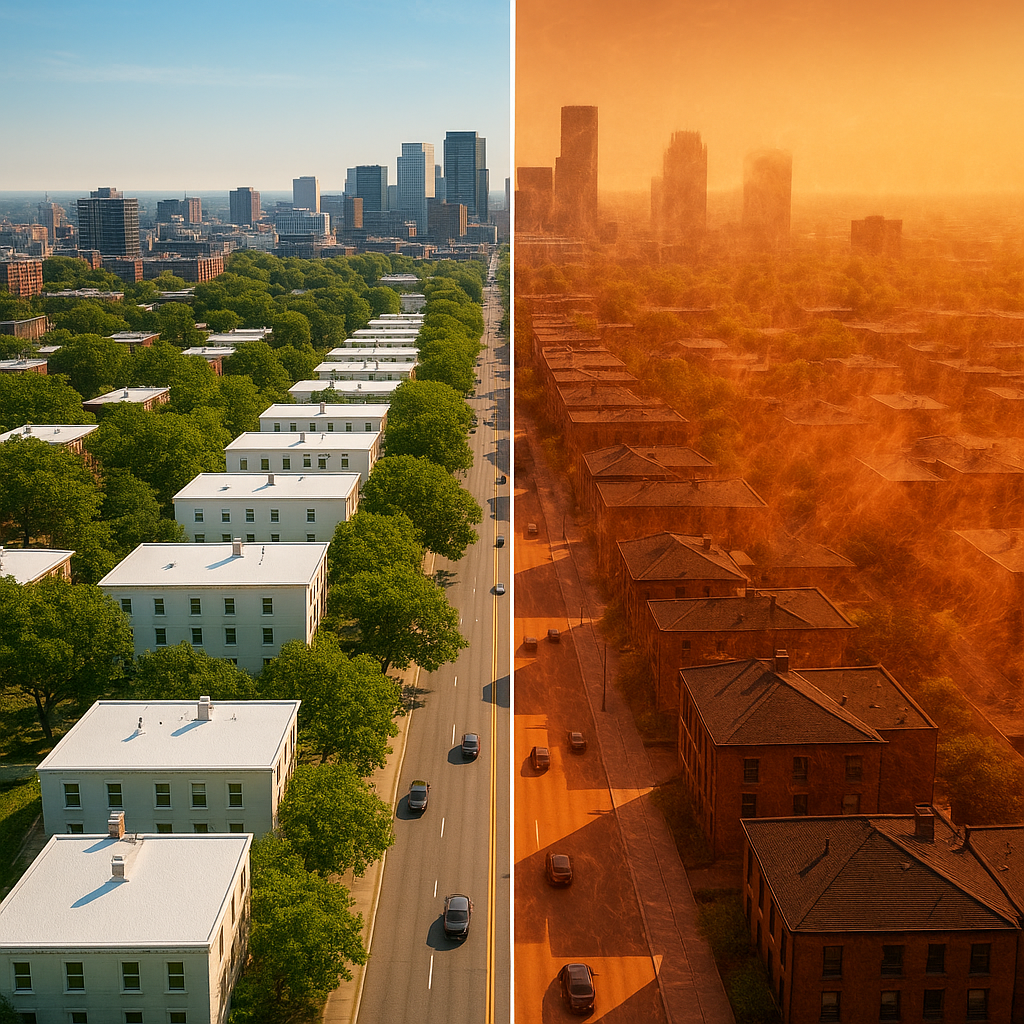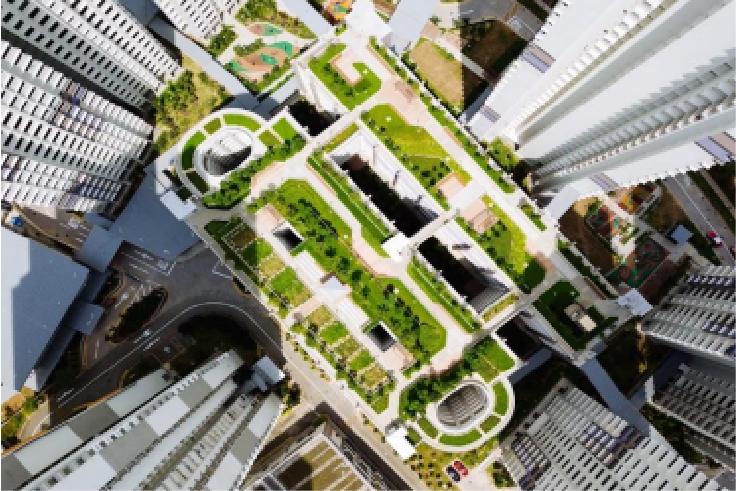Cork Reflex Spray: Natural technology that combats urban heat and climate change.
Urban heat is a growing challenge that affects the comfort and sustainability of our cities. Spray Cork Reflex, made from 100% natural cork, reflects solar radiation and significantly reduces the temperature on roofs. This reduces the use of air conditioning, cuts emissions, and combats the urban heat island effect. Discover how this natural technology is helping to build cooler, more resilient cities.
In this scenario, a disruptive alternative is emerging that’s already making a difference: Spray Cork, a high-performance cladding that combines technology, energy efficiency, and sustainability. Why are more and more homeowners and institutions choosing it in the southwestern US? Find out below.

The challenge of urban heat in times of climate change
Today more than ever, climate change demands
action. Governments, businesses, and citizens are
rethinking their decisions through the lens of
sustainability. In this context, it is no longer enough
for materials to be efficient: they must also be
responsible and actively contribute to slowing global
warming.
In cities, asphalt, concrete, and dark roofs absorb
and retain large amounts of heat. This raises the
ambient temperature by up to 5°C more than in rural
areas, a phenomenon known as the urban heat
island effect. This excess temperature not only
reduces quality of life and indoor comfort, but also
triggers increased use of air conditioning, increasing
energy consumption and greenhouse gas emissions.
Cool roofs: an effective response
The good news is that there are solutions
capable of reversing this trend. So-called “cool
roofs, are revolutionizing the way we build and
renovate buildings. The principle is simple but
effective: instead of absorbing solar radiation,
they reflect it, reducing the surface temperature
of roofs and facades and improving the building’s
energy efficiency.

Cork Reflex Spray: cooling cities with a natural resource
In this scenario, Spray Cork Reflex is presented as an innovative and sustainable solution. It is a thermal coating based on 100% natural cork, highly reflective and with excellent insulating properties. It has a dual action:
1. High solar reflection capacity -> it reflects a large part of the solar radiation, reducing the overheating of surfaces.
2. Low thermal absorption index -> acts as a barrier that prevents heat from penetrating the building.
The result is a significant reduction in surface temperature and a decrease in heat accumulation in the urban
environment. This contributes to creating cooler cities, reducing energy demand for air conditioning, and, therefore, reducing the carbon footprint.
Real cases in Chilean projects
The benefits of Spray Cork Reflex are not just theoretical. Various projects in Chile have demonstrated its impact:
• ICB food plant (Santiago): the coating reduced the surface temperature of the roof by 30°C, improving thermal comfort and reducing the use of air conditioning.
• Orizon fishing Company (Biobio Region): applied to container roofs, it lowered the interior temperature by more than 40°C, optimizing working conditions and product storage.
These cases show that Spra Cork Reflex not onl cools surfaces: it cools cities.
Energy efficiency and climate commitment
Spray Cork Reflex’s ability to keep surfaces cooler
translates into:
• Less use of air conditioning, which means savings
on energy bills.
• Lower greenhouse gas emissions, thanks to
reduced electricity consumption.
• Greater indoor thermal comfort, even during
extreme heat waves.
Made from natural cork, a renewable resource with low
environmental impact, this cladding is part of the
circular econom and sustainable architecture
strategies.


More than a product, a responsibledecisión
In a world that demands urgentsolutionsto
climate change, choosing technologiessuch as
Spray Cork Reflex is not only a good technical
decision: it is a commitmentto the planet and
to the quality of urban life.Spray Cork Reflex is a
key tool for combating extreme heat, improving
energy efficiency, and promoting more resilient,
cooler, and sustainable cities.

